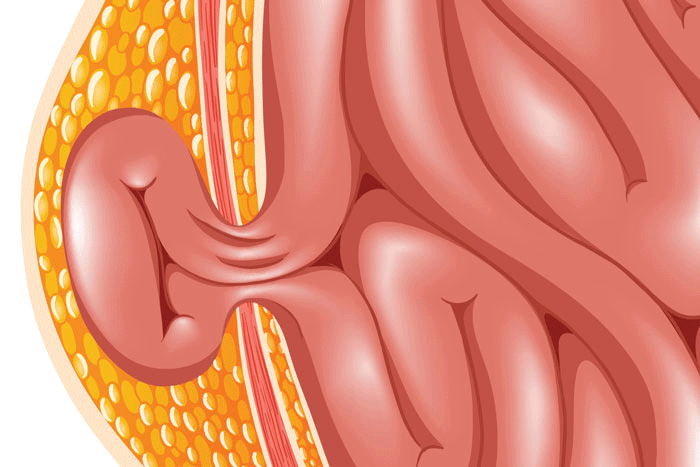What Is a Hernia?
 Courtesy Brigham and Women's Hospital
Courtesy Brigham and Women's Hospital
Don’t put off a hernia repair, as you could end up with a painful obstruction in your abdomen and even need emergency surgery. Here's what you should know.
Internal organs are surrounded by a wall of muscle or tissue. But sometimes organs stick out through that protective wall, usually in the abdomen, which lies between your chest and hips.
The cause is pressure near an opening or weakness of muscle or tissue called fascia. The weakness may be present at birth or arise over time because of obesity, poor nutrition, smoking, frequent pregnancies, straining, or persistent coughing, among other reasons.
YOU MIGHT ALSO LIKE: Symptoms of Bowel Obstruction
The main types of hernias
- Inguinal hernia: In more than 75 percent of all hernias, fatty tissue or part of the intestine juts into the groin at the top of the inner thigh. This kind of hernia is more common in men and affects the passageway, the inguinal canal, where blood vessels lead to the testicles. In women, the canal supports the womb. A femoral hernia, in the outer groin area, is most common in pregnant or obese women.
- Umbilical hernia: In 10 to 20 percent of newborns, fatty tissue or part of the intestine pushes through the abdomen near the belly button. By the time the child is five, the problem usually disappears. Women may get this kind of hernia if they have had many children or are obese.
- Sometimes tissue protrudes through the site of a scar in the abdomen if you are inactive after surgery (incisional hernia). The upper stomach may push through an opening in the diaphragm, the muscle that separates the chest from the abdomen (hiatal or diaphragmatic hernia). Some hernias lie between the navel and breastbone (epigastric hernia).
The main symptom is a noticeable bump that may disappear while lying down. You might even be able to push the tissue back in place and see the bump go away. But it comes back when you move and may get bigger over time, causing a dull ache. In a hiatal hernia, you won’t see a bulge but may have heartburn or chest pain and other digestive issues.
You may also feel pain when lifting objects.
How is a hernia diagnosed?
You may see the bulge or bump yourself, or your doctor may feel it (this is why doctors ask men to cough while feeling around their testicles). A CT scan can confirm the hernia.
Don’t put off surgery
Hernias typically require a surgical repair, which is safer when done before the hernia grows too large. Your surgeon may be able to use small incisions and insert surgical tools (laparoscopic surgery), sometimes controlling them from afar (robotic hernia repair).
If you delay repairing an inguinal or femoral hernia, you could end up with an obstruction (incarceration), that causes nausea, vomiting, and pain. If part of the protruding tissue loses its blood supply, called strangulation, you will need emergency surgery within hours, or the tissue will die.
Can you prevent a hernia?
Yes, you’re less likely to get a hernia if you are not overweight, avoid constipation by eating enough fiber, use correct form when lifting heavy objects, and don’t smoke.
Hernias may come back after surgery, especially if you are obese or smoke.
Updated:
November 07, 2022
Reviewed By:
Janet O'Dell, RN